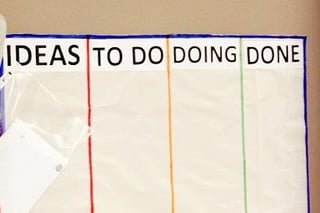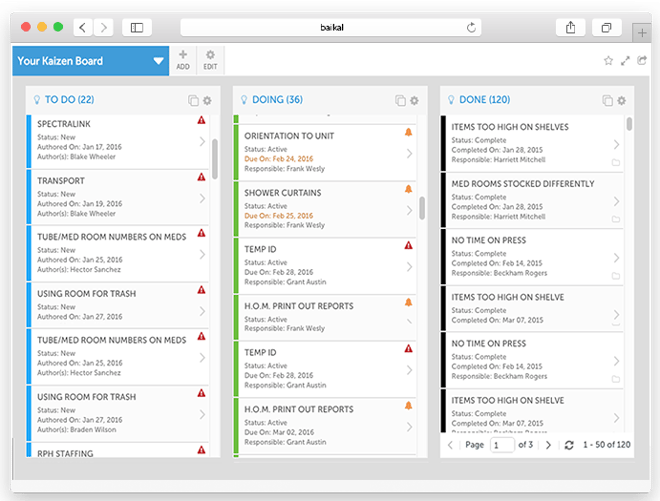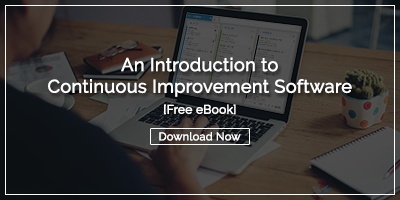 If you’ve implemented a Kaizen board that seemed to gain some traction at first, only to eventually slip from the consciousness of most employees, you are not alone. You might be like “Frank” who recently posted on a Lean management forum:
If you’ve implemented a Kaizen board that seemed to gain some traction at first, only to eventually slip from the consciousness of most employees, you are not alone. You might be like “Frank” who recently posted on a Lean management forum:
“I need to come up with a format for a Kaizen board that will work…Previously, we have used a board to pull improvements through according to importance, but it has slowly died.”
Frank’s Kaizen board suffered the fate of countless others, but I promise you, it wasn’t the format that killed it.
Frank could rearrange, redecorate, and tweak his board for months, and he'd get the same result.
Why? Because it isn’t the format that is the problem, it’s the approach. Here’s why.
Kaizen Boards Don’t Scale
While we applaud any method of creating a structure around daily improvement, Kaizen boards are inherently limited by the fact that they are physical artifacts that reside in one specific location.
That may be fine for very small teams who work in the same space, but they are impractical for large or distributed organizations.
In the same way, they are workable for only a small number of ideas. Even teams with only a few participants can generate hundreds of ideas in a year. The progress and results of each can’t be realistically represented on a board.
Documentation is Only Step One of Improvement
Identifying an opportunity for improvement and documenting the problem along with an idea to fix it is step one in Kaizen. Kaizen boards support this step for sure, but they don’t provide any structure for seeing the opportunity through to results.
For example, related documents and task progress can’t feasibly be attached to the board. If an idea begins to languish without activity over time, the board doesn’t notify anyone or send out an alert.
“Done” is Not the Goal of Kaizen
If you look at most Kaizen boards, they have some kind of progression from idea to “done” or “complete.” This creates the impression that once an improvement idea is implemented, it is over somehow. That can’t be further from the truth.
Once an improvement is in place, the results must be measured, the opportunity for further improvement should be examined, and successful changes should be spread throughout the organization. Kaizen boards don’t support any of that work.
So what’s poor Frank to do? Fortunately, Kaizen software has been developed that does not suffer the limitations of a physical Kaizen board.
In the same way that modern CRM systems have made Rolodexes obsolete, Kaizen software provides a modern alternative to old-fashioned boards.
It overcomes the traditional Kaizen board problems with features such as automated alerts and notifications, electronic displays, task management, anytime/anywhere access, impact calculations, and document management. You keep the visual displays that are so critical for engaging your teams - you just lose the outdated methods of managing the work represented on them.

If your Kaizen board just isn’t getting the results you imagined, consider turning to technology for an upgrade.
How to do better:
Jake at BSA LifeStructures is using KaiNexus' continuous improvement software to overcome these Kaizen board challenges.
Read this blog post to learn how his Kaizen boards have changed for the better.
Download this free eBook for more information about continuous improvement software:



Add a Comment